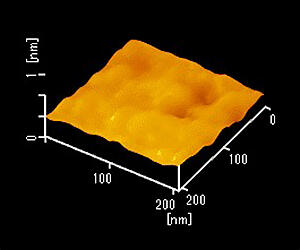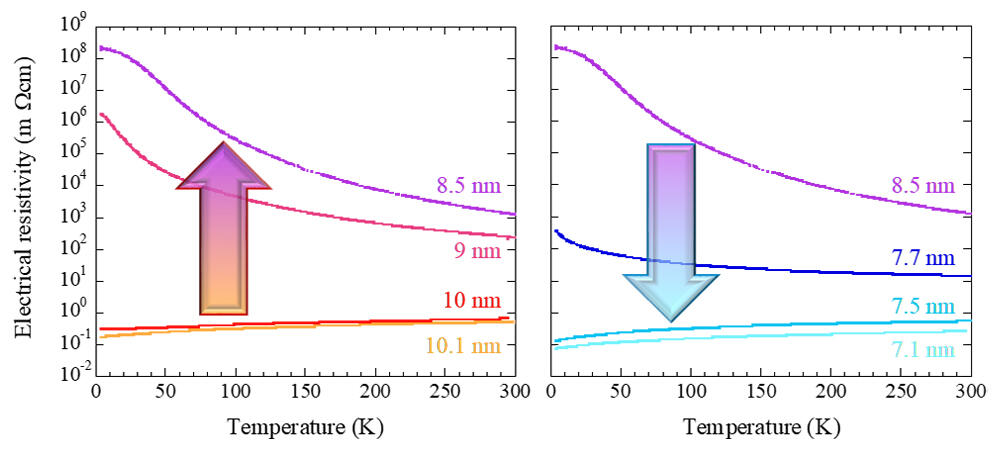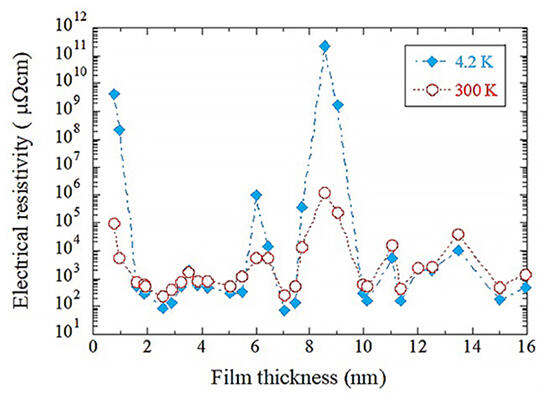A research group consisting of Assistant Professor Masahito Sakoda (Hokkaido University, Faculty of Engineering), Professor Satoshi Tanda (Hokkaido University, Faculty of Engineering), Assistant Professor Hiroyoshi Nobukane (Hokkaido University, Faculty of Science), and Shuhei Shimoda (Technical Staff, Hokkaido University, Institute for Catalysis), discovered a phenomenon, in which the electrical resistance of a thin film periodically oscillated depending on the film thickness.

Provided by Hokkaido University
First, the research group prepared a layered compound, CaRuO3 ultrathin film, with 0.8-16 nm thickness using molecular beam epitaxy. According to Assistant Professor Sakoda, they initially tried to prepare Ca2RuO4. However, only CaRuO3 could be deposited. As they proceeded with the research, they realized that the preparation of CaRuO3 thin films was easy. Further, they considered that a two-dimensional electron system could be prepared by reducing the thickness of the film. Atomic force microscopy confirmed that the surface roughness was 199 pm, which is approximately equal to the size of an atom. Further, the electrical resistivities of the CaRuO3 ultrathin films with various thicknesses were measured.
The group observed a phenomenon, in which the electrical resistivity fluctuated with a period of 2.5 nm with respect to the film thickness. The maximum change in the electrical resistivity was over 3 and 9 orders of magnitude at ambient room temperature and low temperatures, respectively, indicating significant changes that cannot be attributed to conventional size effect. In addition, the electronic state peculiar to the compound contributed to these significant changes. So far, no significant change has been observed in the electrical resistance owing to such a minor difference in scale.

Provided by Hokkaido University
The quantum size effect in bismuth materials revealed 10% or less fluctuations in the electrical resistivity at ambient room temperature and several times at low temperatures. However, studies have reported performance improvement by 10,000 times at ambient room temperature and over a billion times at low temperatures. This modifies the conventional insight on the topic and achieves a major practical change at ambient room temperature and under normal pressure. Assistant Professor Sakoda said that they are fabricating a prototype of an electronic device using CaRuO3. This new size effect causes a large change in the electrical resistance at ambient room temperature and under normal pressure. Therefore, the fabricated device may operate in an environment suitable for human beings.

Provided by Hokkaido University
This article has been translated by JST with permission from The Science News Ltd.(https://sci-news.co.jp/). Unauthorized reproduction of the article and photographs is prohibited.




